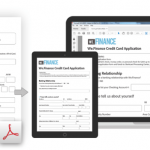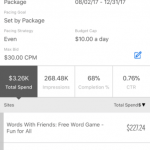Adobe Unveils Actionable AI Insights For Adobe Target
Adobe Unveils Actionable AI Insights For Adobe Target
by Jess Nelson , October 19, 2017
Adobe unveiled a new reporting feature Wednesday for Adobe Target, its digital marketing personalization engine, that helps marketers understand howand why the machine-learning algorithms work the way they do.

Adobe introduced Sensei, its framework for artificial intelligence, into Adobe Target this past July to help marketers optimize customer experiences across channels such as email marketing and website targeting. Now Adobe is taking that one step further.
Adobe will be offering three new tabular reports within Adobe Target: Audience Insights, Offers Insights, and Influencer Insights. The reports will become available after the algorithm finishes computing, and illustrate how Sensei is personalizing content in real-time.
The reports illustrate how Sensei-powered campaigns have improved over time relative to a more generic control group, and highlight why the algorithms make the decisions they do. The basic idea behind the reporting feature is to put the marketer back in the driver’s seat when it comes to artificial intelligence.
Audience Insights details the top 10 audiences based on a set of conversion goals defined by marketers. For example, which audience converted at the highest rate?
Offers Insights illustrates the two highest- and two lowest-performing offers by audience, which could help marketers change tactics and reconsider the type of content they are promoting.
Influencer Insights reports influencers of the model — such as audience segments — by their contribution to the model. It highlights the profile attributes that the algorithm believes are the most influential.
“Everyone’s motivation is to create the right experience for key segments, but also to create the right experience for individuals as they are reacting to a brand,” says Drew Burns, principal product marketing manager at Adobe Target. “Everyone has a desire for this content to be personalized, but to do this at scale is challenging.”
Burns argues that artificial intelligence could help any brand, but that some digital marketers are still resistant to embracing the new technology. Some of the resistance is embedded in a culture that often portrays robots as evil or contrary to humans. Another aspect of that resistance is control.
“Marketers and business owners want control, so relying on an algorithm can take time to warm up to,” says Burns. “What’s required is a lot of transparency.”
The reports illustrate which promotional offers are working well as well as the information the algorithm is basing that decision on, giving marketers greater visibility into how the algorithms work and why they are making the decisions they make.
“When we think about automation, it’s doing something that we’re used to doing ourselves,” says Burns. “Automation can throw marketers off balance because they feel like they’ve lost control, but what we’re actually doing is giving marketers more control.”
Burns compares Sensei to a calculator, describing how it makes up for heavy manual processes such as crunching numbers.
“You give the algorithm the experiences, but it evaluates them like a calculator,” he says.
Even with a complex decision tree, Burns says that he could never crunch these types of numbers by himself because the scale is just too massive. Humans computing these numbers would just take too long, he says.
The new reporting feature is currently in beta testing with select customers, but will become generally available to all Adobe Target customers next year.
MediaPost.com: Search Marketing Daily
(33)













